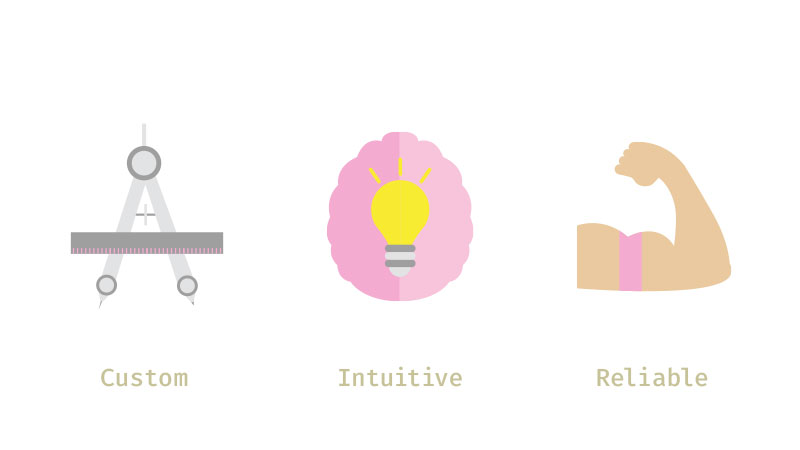Collaborative writing and how to implement it in your application

What is collaborative writing?
Collaborative writing, or co-authoring as some call it, is the process of writing and creating any type of content simultaneously with other people. The content can be a document, a draft, a book, a thesis, a writing assignment, classroom material, or a blog post.
In addition to writing and revising, the creation of strategy, planning and research are all handled by multiple authors. Discussions and the peer review process are part of creation, and require solid communication between authors and an even balance of tasks.
Some researchers believe that for writing to be considered collaborative, decision-making has to be collaborative, too. This means there cannot be a single final decision-maker — all authors must have the same power. Having this strict perception of how collaborative writing should look like is necessary for cases that require a bit more control, like in education. For students, a collaborative writing task is not only a writing exercise but also a collaborative learning exercise. It can help them develop their decision-making, communication, conflict management, and group work skills. It is only natural for collaborators to be equals so their teachers can control the learning environment and evaluate students better. Besides, letting everyone be a decision-maker tends to increase participation in an activity that tends to be solitary.
In the general understanding of the concept of collaborative writing, however, the distribution of power can be much more flexible. This is the case in a business setting where all content writers are professionals that have different skills and expertise. You cannot expect people with diverse skills and authority to have the same decision-making power, let alone workload. In this case, collaborative writing is there to create content more creatively and productively.
In the rest of this article, we are going to focus on the type of collaboration environment where the rules are yours to make. Writing is a creative process, the workflow and writing style depend on each case and individual. We believe modern content creation and collaboration need to be flexible to fit these individual workflow needs.
Why are group writing apps important?
Can you imagine having to get together with multiple people in a room every time you need to write and collaborate?
The creative process does not work like that. You need to take breaks, let the ideas soak in, and come back to it with a fresh mind. Let’s start with the time when this fellow was your collaborator:

Microsoft Word used to be the king of digital content as everybody used it. Studies by Ede and Lunsford in 1990 show that even with the technology available back then, 85% of the documents produced in offices and universities had at least two authors. Any collaboration was either done face-to-face or via email, leading to a string of messages and endless back-and-forth.
Fast forward to Google Docs, which brought online collaborative writing to the masses. People realized they could get everything done in a single document without the back and forth. For the first time, you could comment on digital content, have discussions, make suggestions without messing up the content and distribute different levels of power. It became such a standard that today’s kids, who do not know Clippy, started their digital content journey on Docs. It was a perfect solution for the new age which demanded more content, faster.
More content, more productive
Since the initial launch of Google Docs, a lot has changed. People’s constant demand for new content grew bigger, and so did the need for collaborative writing. To keep up with demand, content creators now need to collaborate more than ever. Collaboration is not only ordinary but expected.
Some people may disagree that co-authoring is a perfect solution since not everybody is keen to share their rough writing. But in the age of social media, sharing your rough-edged writing does not feel as embarrassing as it used to. People are more open to sharing their work before it is finalized. And for some, sharing and feedback are so crucial they cannot write without them. Collaborative writing can help increase motivation, creativity, and linguistic complexity while decreasing grammar errors, which will only encourage people to share more.
In the end, it is all about the writing culture your team is used to. However, it is undeniable that collaborative writing suits best to a social, fast, ever-changing environment that is the internet today. Speed is what is needed in today’s content — it does not matter if you are a journalist, a content writer, a banker, a lawyer, a developer, an academic, or a student.
Collaboration drastically decreases the time it takes to finalize a piece of content. But can a one-size-fits-all solution like Google Docs be the latest and greatest thing for writing?
How your collaborative writing implementation should be

Custom
Much like every individual, teams that write together, or collaboratively, also develop their own culture, writing style, and workflow. How people write changes because of internal team dynamics, regardless of the product they use.
This is the part where we agree with critics of collaboration when they say it should be controlled. But instead of controlling how people collaborate with one another, we should control and optimize the collaborative writing environment to best fit the team’s needs. Do they only use specific writing features and only comment rather than make suggestions? Then customize the writing environment, in this case the online editor, and give them only these features to use instead of a cluttered experience.
This is exactly why we have built, and are continuously improving, our real-time collaborative editor, CKEditor 5, this way. We divided the aspects of collaboration into separate features: collaborative editing (simultaneous typing, selecting, etc.), comments, and track changes. Each feature can be used standalone as well as together, but how you configure, customize, and where you implement them is up to you. The same goes for other features available to the user. For example, if your users never use to-do lists, tables, or quotes, there is no need to clutter the user interface by having them.
In the end, make sure the collaboration solution does not push an unsuitable workflow down your writers’ throats. Instead, it should be configured and customized to your needs.
Intuitive
Resistance to change is a factor that should not be overlooked while implementing new writing software. People are usually used to options we mentioned before, like Microsoft Word or Google Docs. When offered a new solution, it is natural that users will need time to adjust.
It is best to not require any extra effort from your users and instead choose a user interface they are already familiar with. Many options on the market offer an intuitive experience but make sure to check that this is the case for your users as well. While implementing and customizing, avoid unnecessary new features that require re-learning, or try to minimize them.
Reliable
WYSIWYG rich text editing is one of the most underrated solutions out there. It feels and looks pretty straightforward, easy to build and play with for every group member. But speaking based on our 17+ years of rich text editing experience, it is not so easy, especially with collaboration. Rich text editing can either make or break an application, especially if it is a collaborative writing app. When you throw in features like copy-paste, undo, or tables and some edge cases, things tend to get complicated.
Now on top of it all, think about having multiple users — could be 4 or could be 40, depending on the scale of the writing project. To be able to handle complicated rich text elements with multiple users, your editor needs to be strong. Very strong.

Being a strong rich text editor that can handle complexity requires a solid software architecture, vigorous testing, and the stability that comes with it. Make sure the solution can handle all your requirements during both the implementation and when the group project is live, and provide you with stability and robustness for possible things to come.
For CKEditor 5 Collaboration Features, we backed all of these words up with actions. All you have to do is sign up for a free trial and build your customized editor. Feel free to contact us to learn more about how collaborative writing can be implemented in your software, as well as with any other questions.
You can read more on the topic of collaboration in our blog posts:
- Real-time collaboration - 7 greatest benefits - CKEditor 5
- How collaboration lets companies innovate more and better - CKEditor 5
- Tackle too many unproductive meetings - CKEditor 5
- Healthcare SaaS: How innovative software solutions are transforming the medical industry
- Best practices of remote work are at CKSource - Come join us!
- Content collaboration best practices in a nutshell - CKEditor 5
- Remote collaboration - Software that improves working from home - CKEditor 5
- Document collaboration tools - how to break down barriers to success


